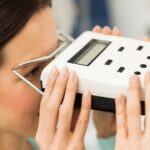Strange Historical Facts on Orthodontics
It is natural to look into the origin of a certain phenomenon or object if you are immersed in it. With orthodontics, it is no different. Orthodontic studies is a very specific field in the course of being a dentist and requires extensive analysis and configuration of the specifically-moduled curriculum.
You might be under the impression that the origins of the orthodontics are a recent discovery which was introduced with the advancement of technology. However, there are some interesting historical facts about this that might be quite contradictory to popular perceptions.
- Outdated braces- The use of braces cannot only be limited to the modern era with teenagers. Recently, dental studies have recorded individuals of all ages getting braces in an attempt to straighten their teeth. Age is definitely a number and a perfect smile is always desirable.
However, there have been artifacts and historical evidence of the use of braces throughout the historical timeline. So you are definitely wrong to think that braces are appliances that are only confined to your age. Throughout several cultures and different historic periods, the use of orthodontic teeth straighteners has been recorded and each method has a specific cultural significance to it.
- Ancient Replicas- As mentioned earlier, the use of teeth straighteners and retainers have been prevalent since ancient cultures.
For example, the historical findings in the tombs of pharaohs and individuals in Egyptian culture show the use of metal wires planted on the gums to provide an asymmetrical shape to it. You might think that this trend was only confined to the pharaohs and the rulers, but that’s not correct. It was extended to the common folk as well. The use of gold, silver, platinum, copper, rubber, wood, and ivory as braces, were used by ancient Egyptians, Greeks, and Romans.
- Racist Dentists- Orthodontists were considered as a royal helper who made people reach popular beauty standards. In addition to being paid handsomely for their outstanding( which might be considered as questionable now) work, they had developed a free pass at commenting on the dental structure of their patients in an insulting manner.
Individuals with misaligned teeth ( which is a hereditary trait) were mocked for being idiots and brainless. Yup, teeth racism.
- Forefather- Edward Angle is considered the forefather of orthodontics. He specialized in removing teeth and aligning jaws, and his work was considered a masterpiece. Hence the long list of never-ending patients. Living in the late 1800s he created several orthodontal appliances that we use to date, like brackets, for the perfect jaw alignment.
The American Association of Orthodontics was a product of his hard work, where he decided to pass down his supreme knowledge to aspiring dentists. His work sowed the seeds of success for orthodontics as an independent discourse.
- Invisalign designed by a Businessman- The basic design of Invisalign, which is the foundation for mastering the art of orthodontics was not discovered by a dentist. Weird, isn’t it?
It was actually discovered by Zia Chishti, who was a businessman and came up with this idea in one of his business ventures. His discovery was definitely a result of personal motive.
- DIY? The practice of orthodontics in the 21st century has become so common, that people are attempting at DIY procedures to keep their teeth and gums in check.
There is a high level of risk attached to this. Firstly, inadequate calculations can lead to excessive bleeding of the gums, and unable to produce a proper flow of blood cells between the root and the gums will cause the tooth to decay and fall off.
Hence, it is advisable for you to trust the work of the certified orthodontist instead of trying it on your own since they have been trained for a purpose.
Conclusion
It is evident that orthodontics is in fact a very old discipline and has established itself as a special branch of dentistry today.






